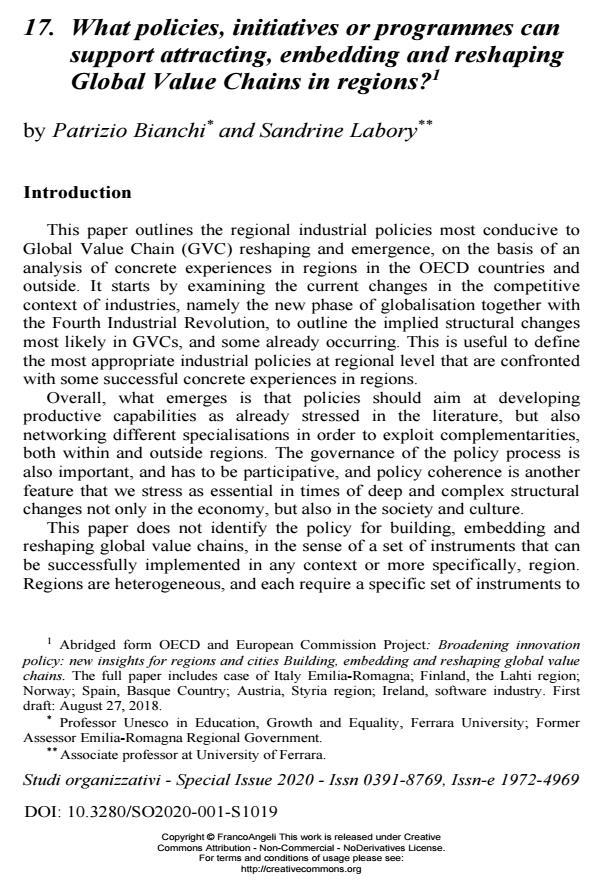What policies, initiatives or programmes can support attracting, embedding and reshaping Global Value Chains in regions?
Titolo Rivista STUDI ORGANIZZATIVI
Autori/Curatori Patrizio Bianchi, Sandrine Labory
Anno di pubblicazione 2020 Fascicolo 2020/suppl. 1
Lingua Inglese Numero pagine 27 P. 287-313 Dimensione file 332 KB
DOI 10.3280/SO2020-001-S1019
Il DOI è il codice a barre della proprietà intellettuale: per saperne di più
clicca qui

FrancoAngeli è membro della Publishers International Linking Association, Inc (PILA)associazione indipendente e non profit per facilitare (attraverso i servizi tecnologici implementati da CrossRef.org) l’accesso degli studiosi ai contenuti digitali nelle pubblicazioni professionali e scientifiche
Patrizio Bianchi, Sandrine Labory, What policies, initiatives or programmes can support attracting, embedding and reshaping Global Value Chains in regions? in "STUDI ORGANIZZATIVI " suppl. 1/2020, pp 287-313, DOI: 10.3280/SO2020-001-S1019